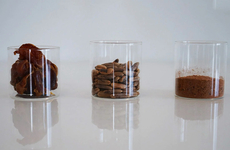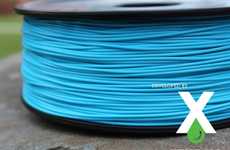
This 3D Printer Plastic Breaks Down Pollutants
Rahul Kalvapalle — April 5, 2016 — Tech
References: american.edu & gizmag
A group of scientists and researchers led by chemist Matthew Hartings over at American University in Washington DC has developed an exceptionally high-tech 3D printer plastic material, designed to be completely compatible with commercial 3D printers, that will make it easier than ever to carry out 3D printing projects in a manner that isn't hazardous to the environment in any way.
The 3D printer plastic was crafted together by mixing nanoparticles of titanium dioxide with conventional liquified ABS thermoplastic. This titanium dioxide substance is known for being able to break down pollutants as part of a reaction with natural light. What's great about the material is that it doesn't make 3D printing processes more difficult in any way.
Ultimately, this pollution-preventing 3D printer plastic will make it possible to carry out fully eco-friendly printing projects.
The 3D printer plastic was crafted together by mixing nanoparticles of titanium dioxide with conventional liquified ABS thermoplastic. This titanium dioxide substance is known for being able to break down pollutants as part of a reaction with natural light. What's great about the material is that it doesn't make 3D printing processes more difficult in any way.
Ultimately, this pollution-preventing 3D printer plastic will make it possible to carry out fully eco-friendly printing projects.
Trend Themes
1. Eco-friendly 3D Printing - This trend highlights the emergence of environmentally responsible 3D printing materials.
2. Pollutant-breaking Nanoparticles - This trend focuses on the use of nanoparticles to break down pollutants in various applications.
3. Compatibility and Accessibility - This trend emphasizes the importance of developing materials that are compatible with existing technologies for wider adoption.
Industry Implications
1. 3D Printing - The 3D printing industry can capitalize on this trend by developing and marketing eco-friendly materials and processes.
2. Chemical Manufacturing - Chemical manufacturers have an opportunity to explore the production of nanoparticle-based materials for pollution prevention and environmental applications.
3. Environmental Technology - The environmental technology industry can benefit from the development of improved materials and technologies for pollution prevention and mitigation.
0.6
Score
Popularity
Activity
Freshness























